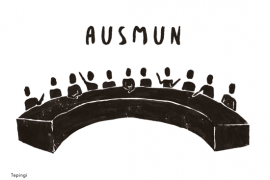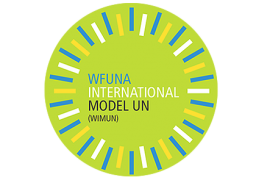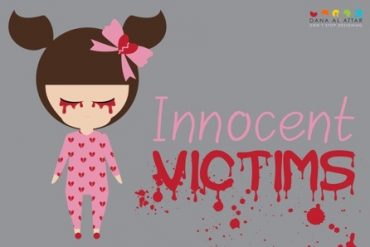The article explains the importance of MUN and tackles some problematic stereotypes about MUNers.

Those who take subjects related to the social sciences essentially investigate the impact of different phenomena on humanity; meanwhile, in other sciences, the situation is often the opposite. These impacts can be direct and indirect, depending on the context. Within the field of sociology, we speak of the manifest and latent functions of things. Manifest function refers to the official role a thing plays, while the latent function is the indirect consequence or role of that thing. I am more interested in latent functions. In case of Model United Nations (MUN), its latent functions are quite fascinating, which is why I engage myself in activities related to it and lead my local MUN organization.
Some people have established stereotypes about individuals who enjoy MUN. For instance, in the field of politics, some of us view MUN as a United Nations fan club, and that is far from the truth. Some of the wittiest critics of the UN I have ever met were in MUN conferences. After all, these individuals know exactly how the UN functions—i.e., they are experts in this particular international organization’s history, mechanics, and so on in addition to its strengths and weaknesses.
Outsiders who establish stereotypes about MUNers often lack sufficient knowledge about the UN in the first place. Having said that, not all MUN conferences accurately simulate the UN. Some misrepresent it on purpose (or inadvertently), in fact, by abiding to parliamentary procedures instead of the UN’s consensus-based model. That is particularly true because there is more to MUN than the UN.
Indeed, MUN has a significant share of diehard UN fans, and that is fine. While I share their idealism, I am also very aware of the international order’s limitations. The UN is not a perfect organization; furthermore, the UN acknowledges its own shortcomings. Even so, one must not forget that the UN has achieved tremendous milestones over the years, in fields and through affiliated organizations we are not necessarily aware of! One of many examples is the World Food Programme (WFP), based in Rome, Italy. It is, by far, the largest organization fighting hunger worldwide. This is one of many initiatives managed and funded by the UN.
The UN is not a world government with awesome powers—it does not even have a standing army, for starters. Instead, the UN is an organization funded by its Member States, to serve its Member States. It is as simple as that. It may evolve in the future (like the EU did, perhaps?), but for now, we must acknowledge its limitations and support its many efforts in promoting peace and security and improving the dire state of this world in many arenas. Due to this grand mission, MUN conferences often attract high achievers. You get to meet globally-minded individuals from all over the world, who want to make a positive change in their communities and planet at large. The energy, the drive, the exchange of knowledge and the engagement in dialogue is what MUN is all about. It is not just about simulating the United Nations, although that is an essential part of it, too.
Written by Omar Al Mutawa, Secretary-General of AUSMUN 2015 and 2016
To register, or know more, please access our website AUSMUN.org
To find out more about AUSMUN:
Website | Facebook | Twitter | Instagram



